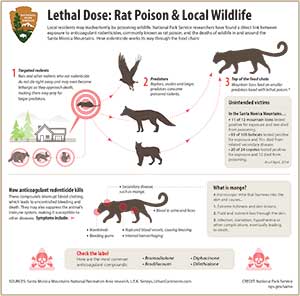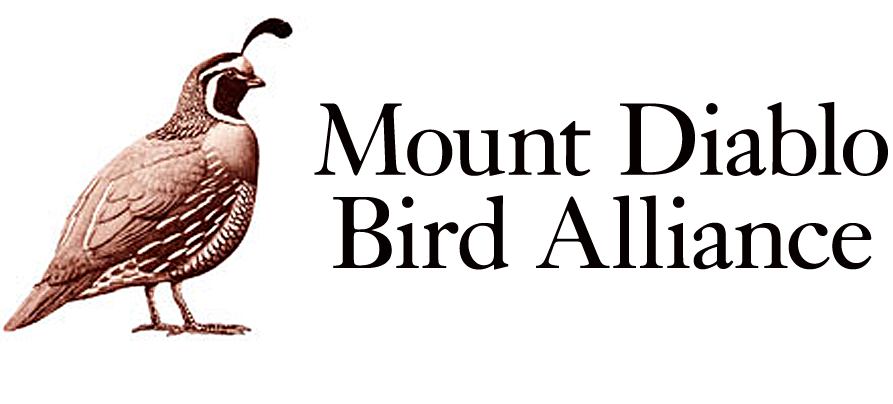Danger – Anticoagulant Pesticides

Barn Owls – innocent victims of rat poison
Anticoagulant rat poisons currently on the market (such as d-CON) contain highly toxic chemicals which interfere with the blood’s ability to clot, resulting in uncontrollable internal bleeding and death. In addition to rodents, other animals that feed on poisoned rodents are also poisoned!
Victims include baby raptors which consume food their parents bring them and baby mammals nursing on their mothers’ poisoned milk. Native wildlife suffering from secondary poisoning include hawks, owls, coyotes, foxes and mountain lions. These animals suffer miserable deaths because of anticoagulant poisons.
Children and pets are also poisoned. According to the EPA, more than 10,000 children are accidentally exposed to rodenticides each year, and an estimated 7,000 pets are accidentally poisoned.
 This National Park Service flyer explains how use of compounds like Diphacinone in gopher and ground squirrel baits take days to kill the rodents, leaving them easy prey for rodent-feeding predators. Once a predator feeds on enough posioned rodents, it dies from poisoning. Secondary poisoning works exactly as the Environmental Hazard labels on the products say it will.
This National Park Service flyer explains how use of compounds like Diphacinone in gopher and ground squirrel baits take days to kill the rodents, leaving them easy prey for rodent-feeding predators. Once a predator feeds on enough posioned rodents, it dies from poisoning. Secondary poisoning works exactly as the Environmental Hazard labels on the products say it will.
WHAT YOU CAN DO
Successful rodent control consists of three elements: good sanitation practices, rodent-proofing structures and rodent killing.
- Practice good housekeeping in your environment.
- Pick up bird seed waste.
- Don’t leave pet food out, and store seed and pet food in pest-proof containers with tight-fitting lids.
- Make sure garbage bags are tied tightly and secured, and close and lock dumpsters.
- Remove excessive vegetation, piles of debris and English ivy; replace with native California plants which offer wildlife habitat.
- Consider installing a barn owl nest box, but only if everyone in the neighborhood agrees not to use poison.
- Exclude rodents from your home by covering all gaps larger than ¼” with small-gauge wire mesh screening.
- Don’t use d-CON or other anticoagulant rodenticide.
- Use snap traps for rodents remaining inside the structure. Hire contractors who will not use poison but revisit to check snap traps.
- Consider alternatives such as electronic traps (the “Raticator”) or a new third generation rodenticide TERAD3. Glue strips are not recommend, as they are inhumane and often trap other creatures.
- Talk to Local Agencies responsible for parks and open spaces.
- Make sure they are aware of the issues and the facts.
- Require them to explain their decisions, particularly if they claim to be a “Certified Green Business”.
- Remind them that poisoning raptors is a felony enforced by the U.S. Fish & Wildlife Service.
- Visit raptorsarethesolution.org to find out much more about this subject and download posters, flyers, and more to put up in your neighborhood, display at events, and share with friends.
